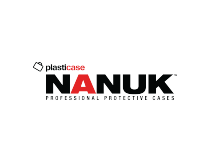Global Synthetic Rubber Market - Segmentation Analysis and Forecast by Technavio
According to the latest market study released by Technavio, the global synthetic rubber market is expected to grow at a CAGR of more than 5% during the predicted period.
This press release features multimedia. View the full release here: http://www.businesswire.com/news/home/20171126005022/en/

Technavio has published a new report on the global synthetic rubber market from 2017-2021. (Graphic: Business Wire)
This research report titled ‘Global Synthetic Rubber Market 2017-2021’ provides an in-depth analysis of the market in terms of revenue and emerging market trends. This market research report also includes up to date analysis and forecasts for various market segments and all geographical regions.
Synthetic rubber is finding increased acceptance and popularity mainly because of the unstable supply of natural rubber and its high price. The extensive application of synthetic rubber in the automotive industry, especially for manufacturing tires, makes it even more popular. The rising number of vehicles and the increasing applications in the non-tire segment are increasing the demand for synthetic rubber. It is highly used in the construction sector, footwear, plastics, and also for medical applications.
This report is available at a USD 1,000 discount for a limited time only: View market snapshot before purchasing
Buy 1 Technavio report and get the second for 50% off. Buy 2 Technavio reports and get the third for free.
Technavio’s analysts categorize the global synthetic rubber market into six product segments:
- Styrene butadiene rubber (SBR)
- Butadiene rubber (BR)
- Styrene block copolymer (SBC)
- Ethylene propylenediene rubber (EPDM)
- Nitrile rubber (NBR)
- Others
Looking for more information on this market? Request a free sample report
Technavio’s sample reports are free of charge and contain multiple sections of the report including the market size and forecast, drivers, challenges, trends, and more.
The top three segments of the global synthetic rubber market are discussed below:
Global synthetic rubber market by SBR
SBR is the main product segment of the global synthetic rubber market. It held a market share of more than 30% in 2016. SBR has styrene and butadiene in the proportion of 3:1 by weight. It delivers high heat durability, enhanced abrasion resistance, and better processability.
According to Ajay Adhikari, a lead plastic, polymers, and elastomers research analyst from Technavio, “The major applications of E-SBR include houseware mats, shoe soles and heels, food container sealants, tires, conveyor belts, adhesives and caulks, brake and clutch pads, hoses, military tank pads, molded rubber goods, extruded gaskets, rubber toys, cable insulation and jacketing, pharmaceutical, and food packaging.”
Global synthetic rubber market by BR
Polybutadiene is one of the earlier types of synthetic rubber to be invented. It exhibits properties that are very similar to natural rubber. It is highly used for applications that require exposure to low temperatures. The diene polymer is produced from a monomer that contains two carbon-carbon double bonds, especially butadiene.
“Most polybutadienes are produced by a solution process with the help of either a transition metal complex or an alkyl metal such as butyllithium, which acts as a catalyst. The reaction is generally carried out in solvents such as hexane, cyclohexane, or benzene because the reaction can be very exothermic and explosive, especially with alkyl lithium catalysts,” says Ajay.
Global synthetic rubber market by SBC
SBC belongs to TPE class and has a wide range of applications. The main products of SBC include styrene-butadiene-styrene (SBS), styrene-isoprene-styrene (SIS), and hydrogenated SBC (HSBC). They are made by the ionic copolymerization of either styrene and butadiene or of styrene and 2-methyl-1,3-butadiene.
SBC has a tensile strength higher than SBR but possesses only low heat resistance. SBS and SIS are less strong than chemically crosslinked elastomers and, therefore, do not recover as effectively from deformation as vulcanized diene elastomers. They are widely used in applications such as adhesives, footwear, sealants, and coatings.
The top vendors highlighted by Technavio’s research analysts in this report are:
- Asahi Kasei Corporation
- Bridgestone
- ExxonMobil
- LANXESS
- MICHELIN
Browse Related Reports:
- Global Polyarylsulfone Market 2017-2021
- Global Fluoropolymer Market in Healthcare Industry 2017-2021
- Global Glycol Market 2017-2021
About Technavio
Technavio is a leading global technology research and advisory company. Their research and analysis focuses on emerging market trends and provides actionable insights to help businesses identify market opportunities and develop effective strategies to optimize their market positions.
With over 500 specialized analysts, Technavio’s report library consists of more than 10,000 reports and counting, covering 800 technologies, spanning across 50 countries. Their client base consists of enterprises of all sizes, including more than 100 Fortune 500 companies. This growing client base relies on Technavio’s comprehensive coverage, extensive research, and actionable market insights to identify opportunities in existing and potential markets and assess their competitive positions within changing market scenarios.
If you are interested in more information, please contact our media team at media@technavio.com.
View source version on businesswire.com: http://www.businesswire.com/news/home/20171126005022/en/



